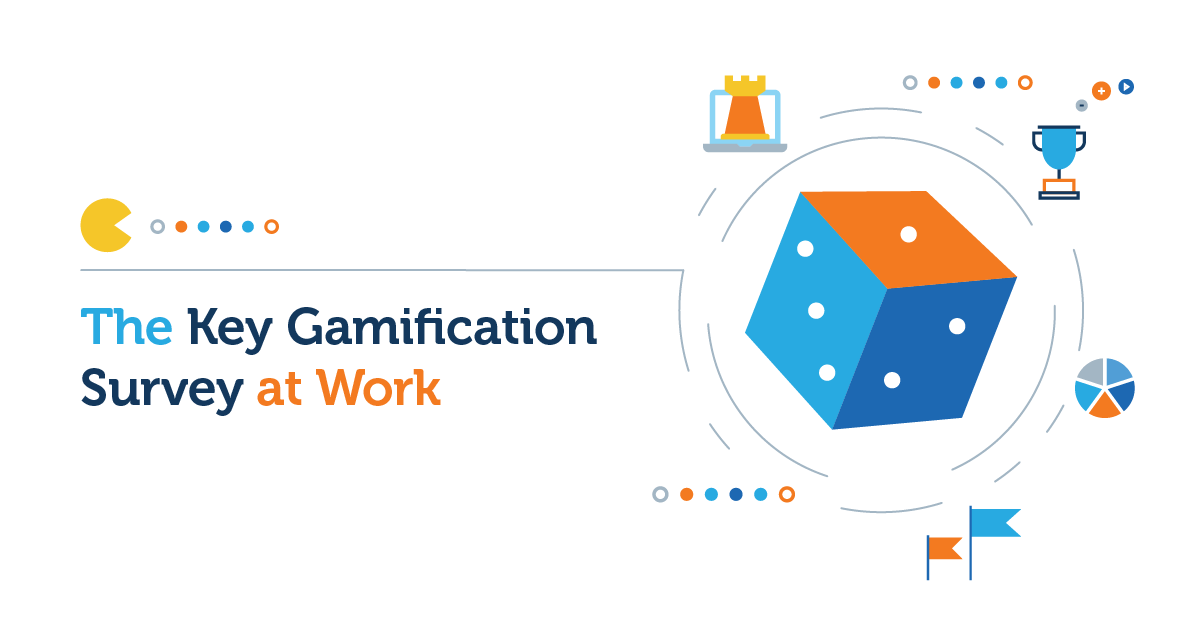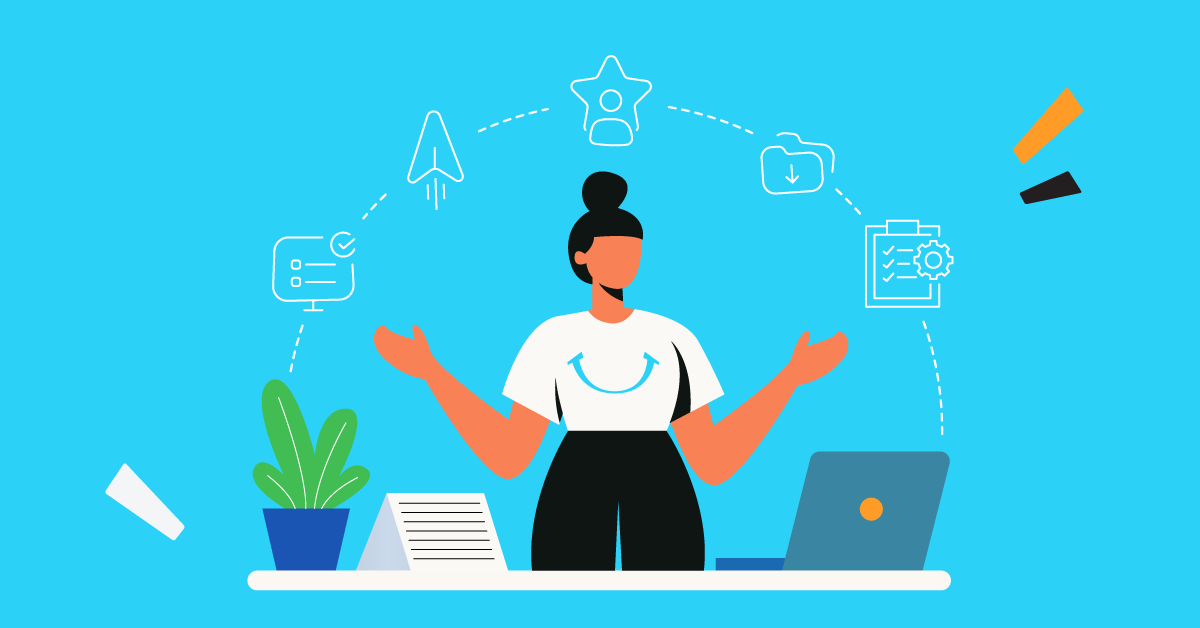- Summary of key findings from TalentLMS’s 2019 Gamification at Work survey :
- Gamification at work: What is it, and how do employees experience it?
- Gamification and employee training: A complete tie-in
- Gamified training vs. non-gamified training
- Gamification, motivation, and engagement: A success trio
- Gamification as a productivity booster
- Recruitainment: Gamification in recruitment is gaining ground
In 2014, TalentLMS conducted a gamification survey to examine how gamified elements change the state of training. In 2018, our gamification stats focused on productivity, motivation, and gamification for employee engagement. This year, the TalentLMS survey has covered both topics.
The interest in gamification seems to be constant. A simple search online comes up with 11 million pages with published content on gamification in business, statistics, and gamification studies.
But does it work? Is employee gamification worth the publicity? In 2018, the answer was yes. But what about 2019?
TalentLMS turned to almost 900 employees and asked whether they had noticed any gamification elements in an app or software they use at work. 374 answered no and were disqualified.
Summary of key findings from TalentLMS’s 2019 Gamification at Work survey :
- Employees say gamification makes them feel more productive (89%) and happier (88%) at work.
- 43% of the employees haven’t noticed any gamification elements at work.
- 33% would like more game-like features in their employee training software.
- 61% of the respondents receive training with gamification.
- 83% of those who receive gamified training feel motivated, while 61% of those who receive non-gamified training feel bored and unproductive (Yikes!).
- Gamification in the workplace still has a significant impact on employee engagement, motivation, and psychology.
- 89% believe they’d be more productive if their work was more gamified.
- 78% of the respondents say that gamification in the recruiting process would make a company more desirable.
Gamification at work: What is it, and how do employees experience it?
When we’re talking about gamification at work, we’re basically talking about turning work activity into a more game-like experience. This way, processes like training and everyday tasks become more interesting and engaging.
Here’s a list of the most common gamified elements staff come across, in order of popularity:
- 71% mention badges as the most common gamification element.
- 59% say they’re granted points by an app or software at work.
- 56% are awarded virtual or physical rewards for accomplishments.
- 51% put leaderboards fourth.
- 47% work with levels.
These findings suggest that, although the technology of gamification is getting more complex, companies, for now, prefer to stick to traditional gamification features.
Gamification and employee training: A complete tie-in
Gamification in training is not a new concept. According to our gamification stats, 61% of employees receive gamification in training.
But which kind of apps would employees like to see more game-like features in?
As it turns out, employees would like to see more gamification in their corporate training software, as well as in communication apps: two areas that don’t have to do with their everyday and repetitive tasks at work per se, but mostly with additional projects that can make their work better.

As for the type of training employees would gamify more if they had the chance:
- 30% picked gamification in corporate compliance training first
- 18% chose training on products and services
- 16% selected technical skills development training
It’s no secret that compliance training could use some entertaining elements. And this 30% who picked it first don’t want to feel bored while taking it.
We also asked employees how they feel while taking their employee training. The good news is that 62% feel motivated. The bad news is that 31% feel bored and unproductive. But what happens if you compare gamified to non-gamified training?
Gamified training vs. non-gamified training
There is also a correlation between gamification in training and employee engagement. When gamified elements are added to training, motivation climbs up to 83%, and boredom drops to just 10%.

Let’s dig into the details.
The majority of people who receive non-gamified training score really low in motivation (28%). They also find their training boring (49%) and unproductive (12%).
Now, here’s what happens when they receive training that features gamification elements (usually eLearning gamification): 83% feel motivated, and only 13% feel bored or unproductive.
In a nutshell, when compared to non-gamified training, it seems that gamification boosts the motivation to learn, and decreases boredom and unproductiveness.
Gamification, motivation, and engagement: A success trio
In 2018, gamification survey results were focused a lot on employee motivation and engagement and on how these two were affected by the concept of gamification. This year, we wanted to see how much the numbers have changed.
In 2018, 81% of respondents said that gamification provided a sense of belonging and purpose in the workplace. Today, the numbers look slightly higher:
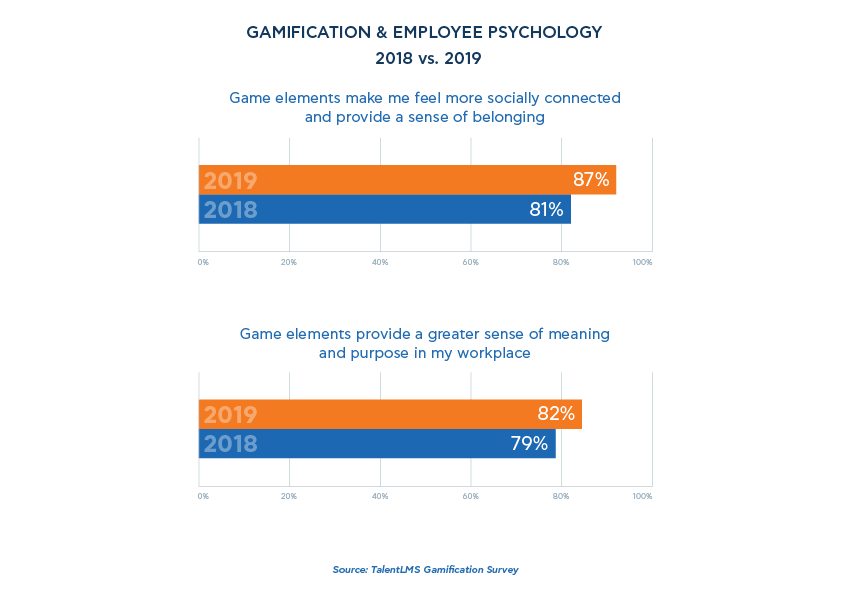
But it goes much deeper. In the previous section, you saw how eLearning gamification creates motivated learners. Now, we can see how gamified software can affect employee psychology and even can be associated with feelings of happiness.
As a matter of fact, the gamification engagement stats suggest that almost 9 in 10 employees feel happier when they use gamified software at work.
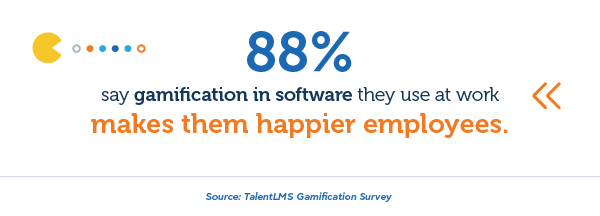
Happy staff equals a happy company. To succeed in that, it would be a good idea for a company to focus more on making processes more fun and, of course, more gamified.
But it should be done the right way.
Karl Kapp, gamification expert and TEDx speaker, notes on gamification and its potential:
“[…]gamification does have great potential but, it’s not reaching that potential as currently implemented. However, when it is implemented it seems to be motivating.”
Gamification, however, doesn’t only increase engagement between a company and its workforce. According to our findings, it also engages them with the actual gamified tool itself.
In 2018, 85% said they’d spend more time on an app or software because of gamification elements. This year, the number has grown by 4%.
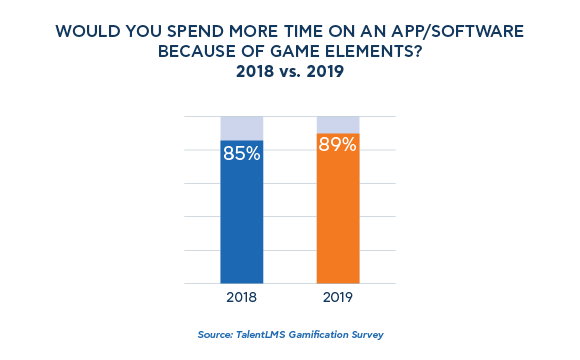
You know companies should introduce gamification at work. But what type of gamification should they invest in?
To figure out the most commonly accepted gamified elements, we asked employees to rank a list of them from most to least motivating. Rewards, for the second year in a row, came first.
Here are the top 5 most motivating gamification elements according to employees:
- Rewards
- Badges
- Points
- Leaderboards
- Levels
Again, trainees seem to be familiar with the traditional gamification elements that, as seen above, companies already provide.
Gamification as a productivity booster
So, gamification can affect employees psychologically. Now, let’s examine how it helps them on a practical level. How do employees respond to gamification when it comes to their actual job and day-to-day tasks?
The news is still good. Employee gamification seems to be boosting competition and eagerness among 89% of the respondents.

On top of that, another 89% clearly states that gamification makes them productive at work; a number which, compared to 2018, is higher by only 2%. But, compared to 2014, it’s higher by 10%.
Last but not least, it looks like gamification is highly requested. Eighty-nine percent say that, if their job had even more gamified elements, they’d probably be more productive.
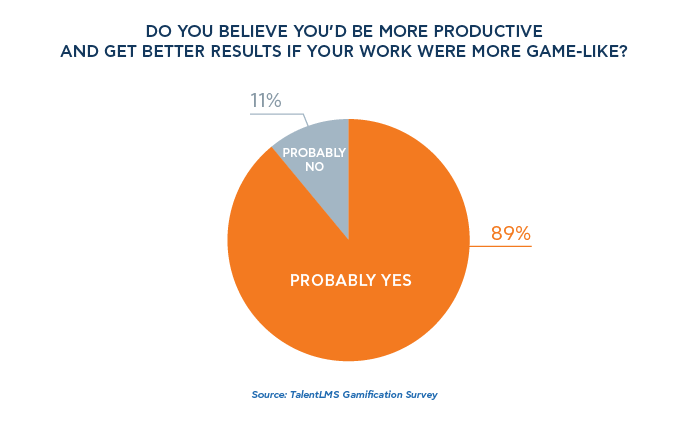
It’s worth noting that, despite our respondents indicating gamification would make them more productive at work, Karl Kapp says management has expressed some doubts:
“An argument against gamification I often hear from management is that gamification would be a distraction and undermine productivity [. ] It doesn’t appear from this response that the employees would be distracted.”
Recruitainment: Gamification in recruitment is gaining ground
Gamification is already very involved in employees’ everyday tasks. It’s time to take a look at a new gamification trend: gamification in the hiring process, also known as recruitainment.

In an attempt to make it more interesting, more effective in terms of hiring the best talent, and shorter, gamification has entered the hiring game.
A 2015 research by Glassdoor indicated that the average time-to-hire was 22.9 days. In its 2017 report, it was 23.8, and, according to a survey by Workable, in some industries recruitment takes even longer than a month.
To see how much of an actual trend it’s becoming, we need to see how much it’s really implemented. Have people come across any gamification elements while being recruited for a job?
With 45% saying yes, we can say that recruitainment is slowly becoming more frequent. Almost as much as gamification at work.
And how do employees feel about recruitainment? Would gamification in the hiring process make a company more likable? Turns out, it would:

Conclusion: Ask the right question
It’s not about whether gamification at work is an asset to companies. Several reports, including this survey, show how much employees appreciate gamification — both as a concept as well as a reality.
The real question is what type of gamification businesses need to implement to achieve engaged, happy, and productive employees. According to our findings, these are the key points a company should focus on:
- Gamification in training with the use of a gamified LMS.
- Gamification in their communication software and tools.
- Digital or physical awards based on their performance or goal achievements.
- Gamified elements with the purpose to boost employee productivity.
- Gamification in recruitment (recruitainment) to engage employees even before they come on board.
All in all, the findings from the TalentLMS 2019 Gamification at Work survey suggest that gamification is, indeed, gaining traction. In addition to its rising popularity, it looks like gamification is likable — not only among the HR community but also among employees who vote in its favor.
The types or the circumstances under which gamification is implemented may have changed. The fact that gamification is here to stay, hasn’t.
| Tags: Gamification
